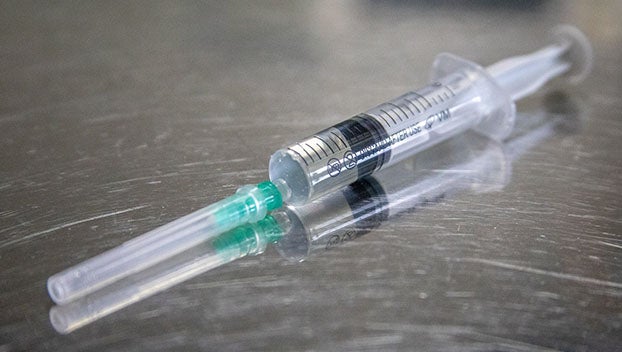CDC reduces quarantine after exposure
Published 9:00 am Friday, August 26, 2022
|
Getting your Trinity Audio player ready...
|
After two and a half years of issuing guidelines for mask wearing and quarantine times in an effort to reduce the spread of COVID-19, earlier this month Centers for Disease Control (CDC) eliminated its guidance that people quarantine after exposure to COVID-19
According to a release from the CDC, things like vaccinations, antivirals, and boosters have reduced the transmission of disease, hospitalization, and even deaths.
“We’re in a stronger place today as a nation, with more tools — like vaccination, boosters, and treatments — to protect ourselves and our communities from a severe illness from COVID-19,” said Greta Massetti, Ph.D., MPH, “We also have a better understanding of how to protect people from being exposed to the virus, like wearing high-quality masks, testing, and improved ventilation. This guidance acknowledges that the pandemic is not over but also helps us reach a point where COVID-19 no longer severely disrupts our daily lives.”
VIRGINIA’S RESPONSE
According to Piedmont Health District Director Dr. Maria Almond, the Virginia Department of Health (VDH) is in the process of reviewing and assessing the new CDC guidance.
Dr. Almond said that for schools (students, staff, teachers), VDH has recommended no quarantine regardless of vaccination status but suggests careful monitoring of symptoms and consideration of post-exposure testing and mask-wearing for a 10-day period after exposure.
Also, under VDH guidelines, quarantine after exposure was only recommended if unvaccinated and with no prior infection in the past six months.
WHAT DOES THE LATEST GUIDANCE SAY?
The latest guidance, released on Aug. 11 from the CDC, includes the following:
Recommending that instead of quarantining if you were exposed to COVID-19, you wear a high-quality mask for ten days and get tested on day 5.
Reiterating that regardless of vaccination status, you should isolate from others when you have COVID-19. You should also isolate if you are sick and suspect that you have COVID-19 but do not yet have test results. If your results are positive, follow CDC’s full isolation recommendations. If your results are negative, you can end your isolation.
Recommending that if you test positive for COVID-19, you stay home for at least five days and isolate yourself from others in your home. You are likely most infectious during these first five days. Wear a high-quality mask when you must be around others at home and in public.
If after five days you are fever-free for 24 hours without the use of medication, and your symptoms are improving, or you never had symptoms, you may end isolation after day five. Regardless of when you end isolation, avoid being around people who are more likely to get very sick from COVID-19 until at least day 11. You should wear a high-quality mask through day 10.
Recommending that if you had a moderate illness (if you experienced shortness of breath or had difficulty breathing) or severe illness (you were hospitalized) due to COVID-19 or you have a weakened immune system, you need to isolate through day 10.
Clarifying that after you have ended isolation, if your COVID-19 symptoms worsen, restart your isolation at day 0. Talk to a healthcare provider if you have questions about your symptoms or when to end isolation.
Recommending screening testing of asymptomatic people without known exposures will no longer be recommended in most community settings.
Emphasizing that physical distance is just one component of how to protect yourself and others. When assessing the need to maintain physical distance, it is important to consider the risk in a particular setting, including local COVID-19 Community Levels and the important role of ventilation.


